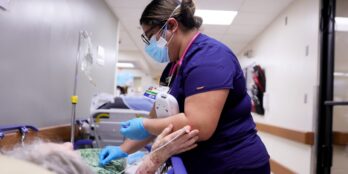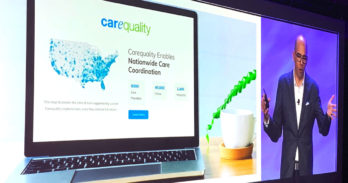
Support Purposeful Living by Fulfilling Needs
 3 min
3 min
“The fact is that people are good. Give people affection and security, and they will give affection and be secure in their feelings and their behavior.” – Abraham Maslow
The role of senior care providers is to ensure that residents have access to a safe place to live, nutritious meals, and support with their activities of daily living. Maslow’s Hierarchy of Needs shows that an individual cannot fulfill their highest aspirations for a meaningful life (the top of the pyramid) until their fundamental needs of safety, food, and shelter are met (the base of the pyramid). However, providers need to move beyond just the base of the pyramid to promote purposeful living for every resident.
To move residents up on Maslow’s pyramid and create a better experience for residents, every resident should be offered activities of engagement that are tailored to meet their current needs and interests. When engagement is prioritized by management, staff can help residents achieve their highest aspirations by cultivating a sense of belonging and self-esteem that come from being deeply understood and valued as a unique person.
Using Maslow’s pyramid framework, providers can successfully promote meaningful engagement and purposeful living by considering these three stages:
Stage One
To reach the highest level of Maslow’s pyramid, providers need to focus on supporting autonomy, spontaneity, and individualized interests in their programming. Once this happens, every resident becomes an active participant in their care and can partner with staff in the decision-making process. Collaborating with staff raises their self esteem, allowing them to live purposefully in their community no matter their needs or interests.
Stage Two
Providers should offer engagement that is person-centered and accurately matched with a resident’s current needs and preferences. How many residents are truly receiving engagement based on who they are and their cognitive or physical potential? Purposeful living is achievable when staff understands who a resident is and build an engagement plan that supports their individuality. They must also know when and how to adjust the plan when a resident is not responding to it.
Stage Three
Providers need to know about the residents that need the most engagement, as well as how they can best focus on those residents. Everyone needs meaningful engagement to support their purpose in life, but many residents need extra attention. However, they may not always be able to advocate for it. These types of situations represent a risk and opportunity for the resident’s quality of life and the success of the community.
Consider these following scenarios:
Scenario one: Marie isn’t visited by her family, she doesn’t come out much of her room and isn’t very “social”. By being isolated, she is beginning to show signs of depression.
Scenario two: John suffers from mild cognitive impairment and is getting more overwhelmed in large group programs. He has difficulty following a discussion and the distraction from other participants is sometimes perceived by John as aggression. By being placed in what feels like an aggressive situation, he is very likely to respond verbally or physically in a way that some might call a troublesome “behavior”.
Scenario three: Eric is thriving despite his loss of mobility and vision thanks to the new volunteer program of the community. When spring break arrives and the student volunteers do not appear, Eric waits for them impatiently. After several days of missed visits, Eric decides to search for his volunteer friend and, due to his poor mobility and vision, falls after walking down the corridor.
In each of these situations, with an individualized engagement plan built around the current functional needs and unique preferences of the resident, unnecessary pain and discomfort could have been avoided. The goal each day should be that residents like Marie, John, and Eric can live purposefully by always receiving the right amount of attention at the right time.
To help staff give residents the focus and engagement needed, providers should consider leveraging technology. By having the opportunity to document resident details and preferences quickly and easily, staff are able to be more present. Learn more about the benefits of incorporating technology to document resident insights by reading Why the Smallest Details Can Have the Biggest Senior Living Impact.
April 6, 2018





